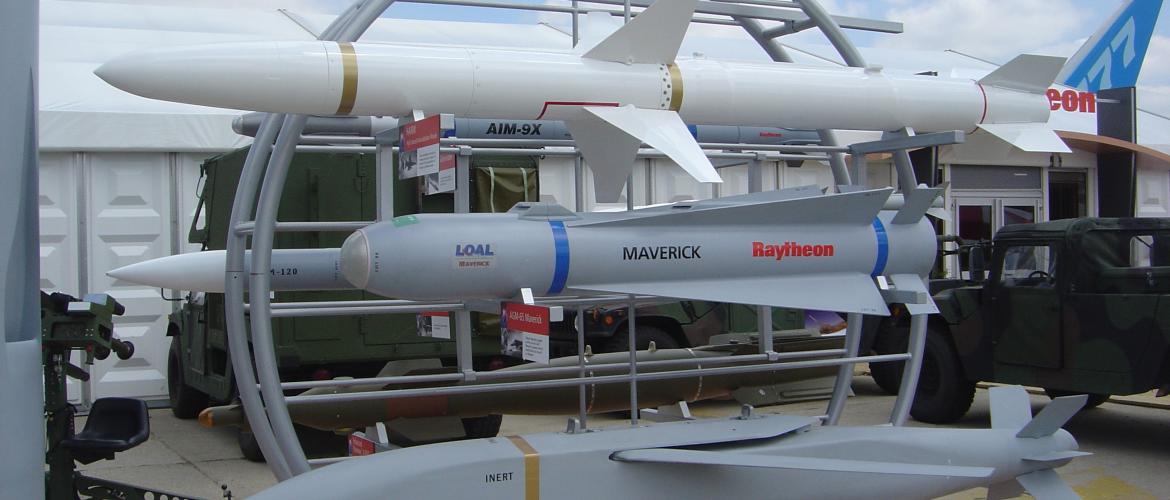US arms sale to allies
May 21, 2019 | Expert Insights

Background
For many years, the United States and the international community have tried to negotiate an end to North Korea’s nuclear and missile development and its export of ballistic missile technology. Those efforts have been replete with periods of crisis, stalemate, and tentative progress towards denuclearization.
The United States has pursued a variety of policy responses to the challenges posed by North Korea, including military cooperation with U.S. allies in the region, wide-ranging sanctions, and non-proliferation mechanisms such as export controls. The United States also engaged in two major diplomatic initiatives to have North Korea abandon its nuclear weapons efforts in return for aid.
Since Trump took office in 2017, the U.S. has issued its own set of sanctions through the so-called “maximum pressure campaign,” which blocks from the U.S. financial system any foreign business or individual involved in trade with North Korea, and exposes any assets of the foreign businesses or individual to seizure by the U.S. government. In February 2019, the denuclearisation talks stalled after a second summit between North Korea and the United States broke down in Hanoi.
Analysis
The US State Department has cleared possible sales of air defence missiles to South Korea and Japan, the Pentagon said. It has approved 94 SM-2 missiles used by ships against air threats, along with 12 guidance systems for a total cost of $313.9 million for Korea and 160 anti-air AMRAAM missiles and related guidance equipment to Japan for $317 million.
South Korea already uses SM-2 missiles developed by Raytheon Co but is building more missile defence-capable destroyers equipped with the weapon. The ROK Navy intends to use the SM-2 Block IIIB to supplement it existing inventory.
Japan’s request covers 160 AIM-120C-7 AMRAAMs, one AIM-120C-7 AMRAAM guidance section and associated support. Although not specified by DSCA, the AIM-120C can be equipped on the F-35 Joint Strike Fighter, of which Japan recently increased its planned procurement. “It is vital to U.S. national interests to assist Japan in developing and maintaining a strong and effective self-defense capability,” the DSCA notification reads. "The proposed sale of these missiles will provide Japan a critical air defense capability to assist in defending the Japanese homeland and U.S. personnel stationed there.” Japan has been stocking up on high-end munitions, having previously requested $1.774 billion since Oct. 1, according to DSCA notifications, including a previous tranche of AMRAAMs. Japan has decided to expand its defence spending to $240 billion by 2023. According to the government of Japan the defence budget is likely to touch $47 billion in fiscal 2019.
The sales “will support the foreign policy and national security objectives of the United States” by assisting key allies and “will not alter the basic military balance in the region,” a State Department statement said. The Republic of Korea is one of the major political and economic powers in East Asia and the Western Pacific and a key partner of the United States in ensuring peace and stability in that region.
The proposed sale comes after North Korea recently criticized South Korea's defense purchases from the United States, including the arrival of the first F-35 stealth aircraft. The South Korean deal to purchase 40 F-35 was signed in 2014 at 6.8 million dollar and is set to be completed in 2021. North Korea, on its part, has boasted about its indigenous surface-to-air missiles. North Korea last week tested what the South Korean military said appeared to be two short-range missiles in its second launch in less than a week.
Assessment
Our assessment is that the testing of shorter-range missiles by North Korea threatens South Korea, Japan and American forces deployed in Northeast Asia. We feel that for the United States to suggest disinterest in North Korea’s tests could leave Americans less safe and undercut the concerns of allied countries.
It can be noted that North Korea conducted its recent missiles tests just after US and South Korea commenced a new military exercise known as Dong Maeng. This replaces the larger scale Foal Eagle and Key Resolve springtime exercises that US and South Korea carried out previously. We feel that Dong Maeng is seen as a violation of the joint declaration that Kim and Trump signed in Singapore in 2018. Testing shot range missiles boost the morale of Kim’s military hardliners who are not willing to disarm, nor do they wish to be seen as bowing to US requests.
In hopes of sanctions relief, North Korea refrained from conducting weapon tests last year but there was no relief provided which has likely forced them to change their plan. We feel Pyongyang has taken a maximum pressure approach of its own.








Comments